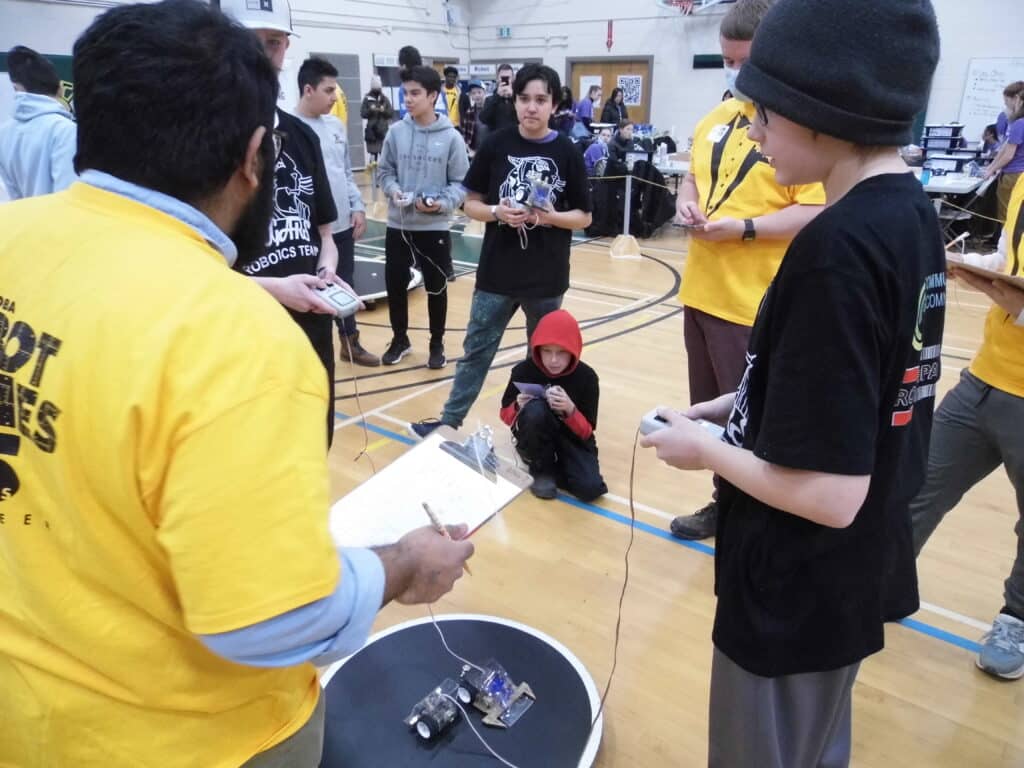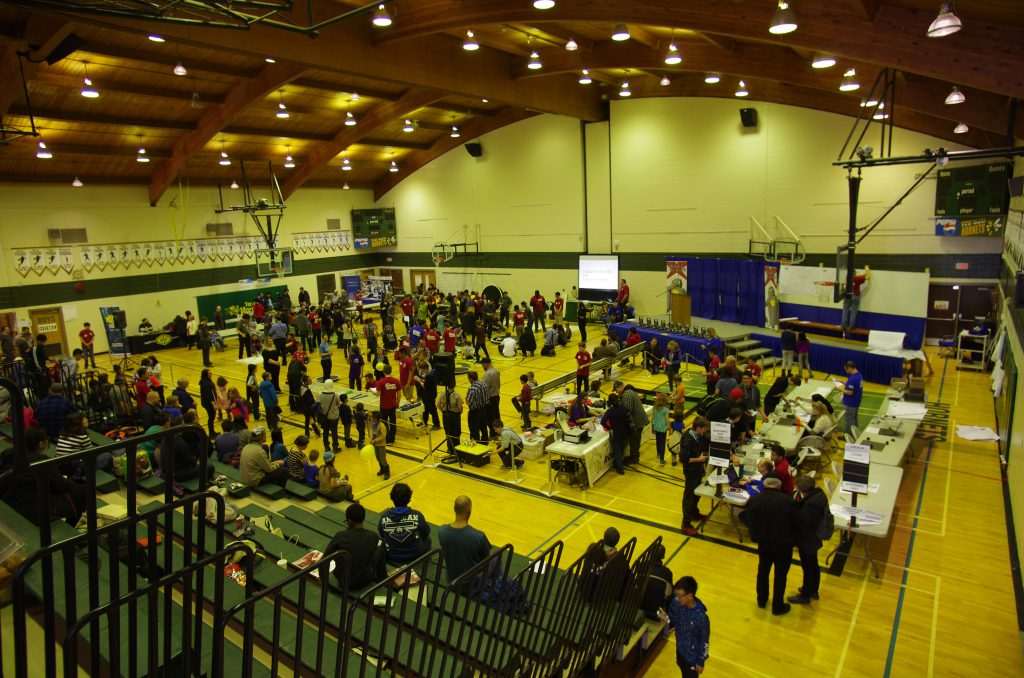Manitoba Robot Games
Build a robot and compete in the Manitoba Robot Games.
Then, look to a career in engineering!
Congratulations to the winners of the 2025 Manitoba Robot Games
And a big THANK YOU to all the volunteers!
- Check out the different competitions
- Watch the site for photos and other news


1. A photo of the 2018 games in full swing.
The Manitoba Robot Games are an exciting annual event that brings together robotics enthusiasts of all ages to compete in a variety of challenges. Participants showcase their skills in building and programming robots, testing their creations in competitions designed to inspire innovation hands-on learning in STEM fields.
2. Two large sumo bots face off in the ring.

A passion for robotics
Students from across the province gather to compete in Manitoba
Robot Games every spring and learn valuable engineering skills.
But what else do we do?
Robotics building workshops
The MRG committee supports a program of robot building workshops for youth groups and classes of school students.
Purchase robot kits
We have kits for purchase so that individuals or instructions can build their own unique robots.
Curriculum for teachers
The MRG committee offers curriculum to teachers from grades 5 through 8, to help you use robots in the classroom.
Encourage technical and soft skills
Building robots encourages the fusion of technical and soft skills. Collaborating with your team is key for success!
Volunteer opportunities
The MRG is a fantastic organization to volunteer with for those interested in robotics whether you want to volunteer throughout the year or not.
Inspire kids to pursue engineering
And it’s not only engineering. Students who love robotics also can take that inspiration and apply it to many disciplines.
Our posts
“Elementary school is the place where you really start to build the enthusiasm and the interest in STEM subjects.”
Alan Pollard
Executive Committee Member
Interesting in volunteering?
Be a part of the Robot Games by signing up. Whether you want to participate on the executive board, or want to be on site during the Games itself, we’re always looking for help!
